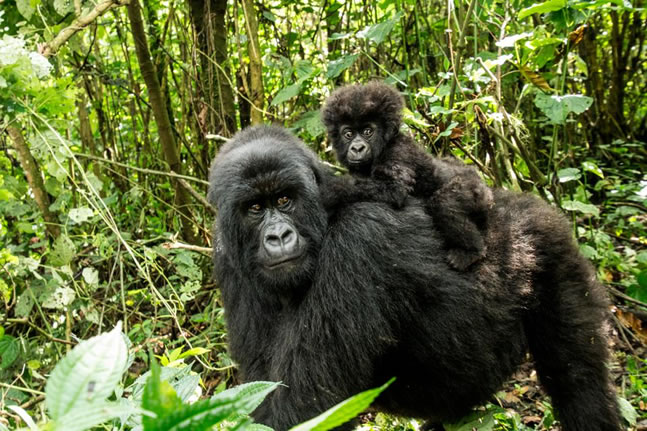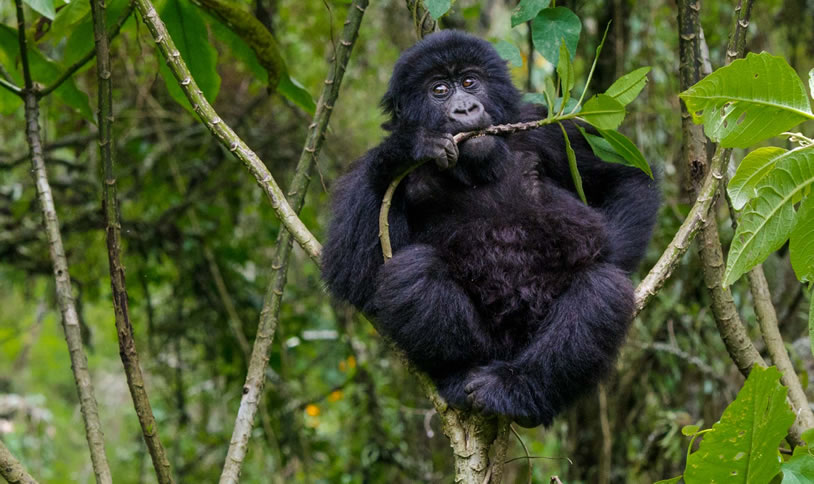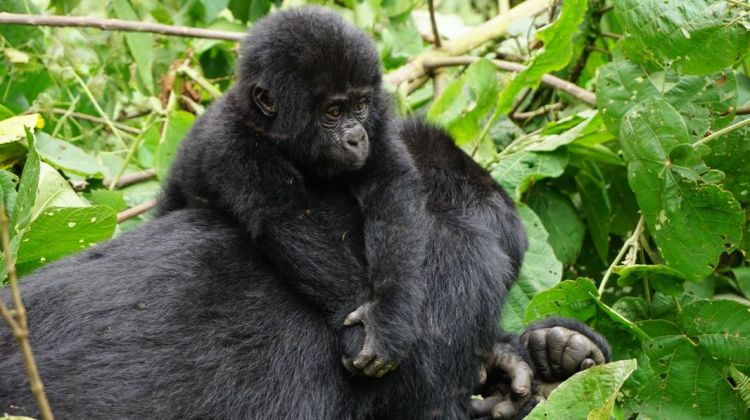
International Union for Conservation of Nature, a popular worldwide organization working in conservation and preservation of the environment and natural resources each time comes up with a research report on different wildlife species or natural habitats.
In the early 1990s, the mountain gorillas were red-listed as endangered species since there were threats of extinction in the near future. Up-to-date the mountain gorillas are still under endangered species since their total population is still low (about 1000 individuals in the whole world).
The mountain gorillas are only found in the east and central tropical rain forests of Africa where the three great countries of Uganda, Democratic Republic of Congo and Rwanda lie. The three countries are the only places in the world with natural habitats where the mountain gorillas live. The natural habitats of the mountain gorillas are the Bwindi impenetrable forest, the best destination for mountain gorilla safaris in Uganda and the Virunga massif that is straddled by Uganda, Rwanda and the Democratic Congo Republic. In the Virunga massif, mountain gorilla trekking takes place in Mgahinga National Park in Uganda, and Virunga National Park in the Democratic Republic of Congo. Mountain gorilla trekking in Rwanda takes place in the magnificent Volcanoes National Park that offers the most expensive experience where each gorilla permit costs USD1500.
Though the three countries have come up with measures of preserving and conserving the mountain gorillas by protecting and managing the locale of the mountain gorillas, there are still threats faced by the huge primates. The threats which the mountain gorillas face have led to their drastic decline over the years hence being red-listed under the endangered species.
The mountain gorillas are endangered species because of the civil wars that have been raging the forests. The tropical rain forests of the east and central Africa are very dense thus being a good spot for rebels that have been destabilizing the three countries of Uganda, Rwanda and DR Congo.
The governments have made efforts to shrug the rebels out of the gorilla habitats thereby raging a war which has led to the killing of the mountain gorillas by the astray bullets that fly in the forests during the attacks. This predicament has led to the great loss of the mountain gorillas thus leading to their decrease in number.
The mountain gorillas face a threat of poaching
There are some greedy people who invade these forests to trap the gorillas and take them for their commercial gains. These people are interested in trading their meat while others in their parts like the noses, skins and limbs. Poaching is one of the major reasons as to why there is a low number of gorillas since this has become a perpetual and profitable activity that can never stop.
Human settlement in their habitats has also led to their endangerment.
Due to the growing human population around the forests where the mountain gorillas live, people have started encroaching on them by clearing them to find space to settle. In the due process, the mountain gorillas have become homeless and at times they are killed by the local people.
Low reproduction of the mountain gorillas
Naturally, mountain gorillas have a low fertility rate therefore their reproduction and multiplication are very slow. A mountain gorilla starts producing at the age of 12 to 15 years and a female one can get pregnant once in five years since it takes lots of time taking care of the young ones till their around 5years.
Epidemic disease invasion
Due to the human settlement and gorillas having 98% DNA similarity with humans, any epidemic disease that attacks the humans around the forests also affects the gorillas. For instance, over two decades, there has been multiple outbreaks of Ebola around the Virunga massif in Congo and this has led to massive killing of the mountain gorillas.
Though the mountain gorillas are endangered species as listed by the International Conservation Union For Nature, in recent years there has been some positivity on their preservation and conservation. Their total population is gradually increasing and this is can be validated by the census done over the decade. Around 2010, there were only about 800 mountain gorillas in the world but by the recent census conducted in 2018, the population was recorded to be more than 1000 individuals.


